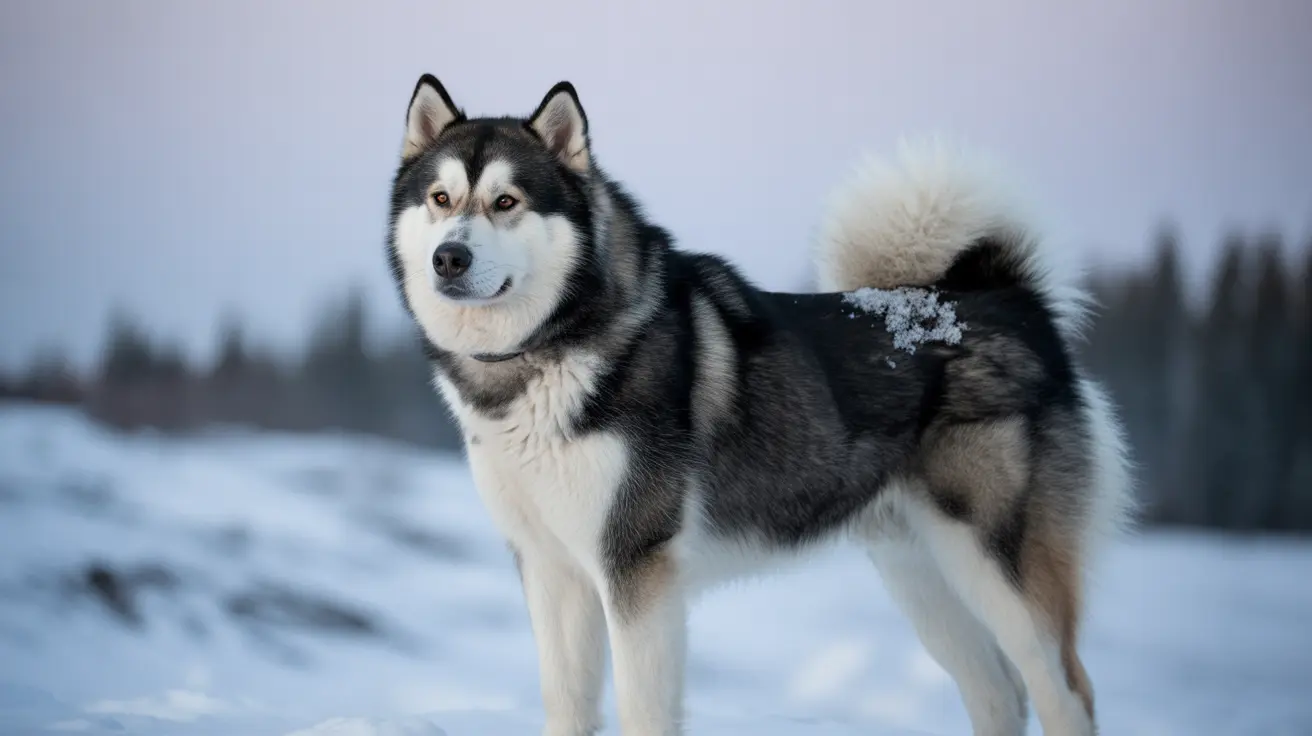The Alaskan Malamute stands as one of the most magnificent and powerful Arctic dog breeds, known for its impressive size and robust build. Understanding the full grown Alaskan Malamute size is crucial for potential owners and breed enthusiasts, as these remarkable dogs require specific care considerations due to their substantial physical presence.
In this comprehensive guide, we'll explore everything you need to know about Alaskan Malamute growth patterns, expected adult sizes, and important health considerations related to their substantial build. Whether you're a current owner or considering adding this majestic breed to your family, this information will help you better understand and care for these extraordinary dogs.
Adult Size Standards and Gender Differences
Adult Alaskan Malamutes display significant sexual dimorphism, with males typically being larger than females. Male Malamutes usually weigh between 85 and 130 pounds and stand approximately 25 inches at the shoulder. Female Malamutes are somewhat smaller, typically weighing 75 to 90 pounds and standing around 23 inches tall.
The American Kennel Club's breed standard provides specific guidelines, though many healthy Malamutes may fall slightly outside these ranges while still being considered typical for the breed. Some specialized breeding lines, particularly those developed for working purposes, may produce larger individuals.
Growth Timeline and Development Stages
Alaskan Malamute puppies follow a predictable growth pattern, though individual dogs may develop at slightly different rates:
- 2-4 months: Rapid growth phase, reaching 25-40 pounds
- 4-6 months: Continued quick growth, typically 45-60 pounds
- 6-12 months: Steady growth, reaching 70-80 pounds
- 12-24 months: Final development and filling out
Most Malamutes reach their full height by 12 months but continue developing muscle mass and filling out their chest until they're 18-24 months old. This extended growth period is typical for large breed dogs and requires careful nutritional management to support healthy development.
Physical Characteristics and Build
Full grown Alaskan Malamutes possess several distinctive physical traits that contribute to their impressive appearance:
- Broad, powerful chest
- Heavy bone structure
- Dense, double-layered coat
- Strong, well-muscled shoulders and hindquarters
- Distinctive plume tail carried over the back
Health Considerations Related to Size
Due to their substantial size, Alaskan Malamutes require specific health monitoring and preventive care:
- Regular joint health assessments
- Weight management to prevent obesity
- Appropriate exercise to maintain muscle tone
- Proper nutrition for large breed dogs
- Regular veterinary check-ups focusing on size-related health issues
Frequently Asked Questions
What is the average full grown size and weight of a male and female Alaskan Malamute?
Males typically weigh 85-130 pounds and stand 25 inches tall, while females weigh 75-90 pounds and stand 23 inches tall at the shoulder.
At what age does an Alaskan Malamute typically reach its full adult size and weight?
Alaskan Malamutes reach their full height around 12 months but continue filling out and developing muscle mass until 18-24 months of age.
How does the growth pattern of Alaskan Malamute puppies progress during their first two years?
Puppies experience rapid growth in their first 6 months, reaching 45-60 pounds, then continue steady growth until 12 months (70-80 pounds), with final development occurring by 24 months.
What are the key physical traits that distinguish a full grown Alaskan Malamute from similar breeds like the Siberian Husky?
Alaskan Malamutes are notably larger and more heavily built than Huskies, with broader chests, heavier bone structure, and more substantial overall mass.
Can Alaskan Malamutes grow larger than the standard size, and what health considerations come with "giant" Malamute lines?
Some Malamutes, particularly from "giant" lines, can exceed 130 pounds. These larger dogs may face increased risks of joint problems, shorter lifespans, and other size-related health issues.
Owning an Alaskan Malamute requires understanding their size-related needs and providing appropriate care throughout their development. With proper attention to nutrition, exercise, and health monitoring, these magnificent dogs can thrive as beloved family companions while maintaining their impressive physical presence.






